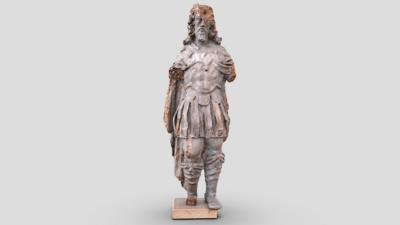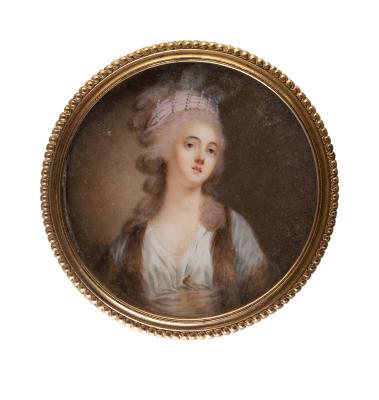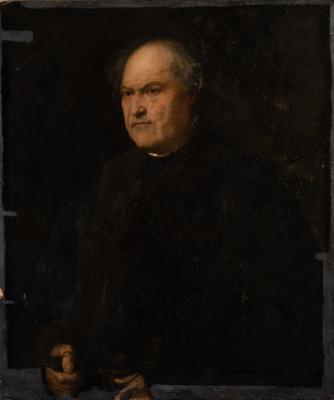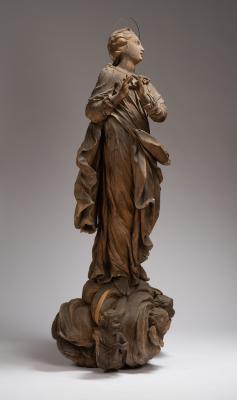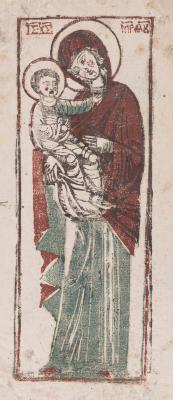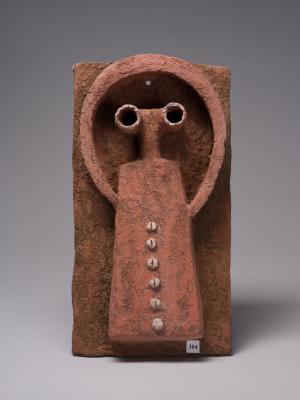The engraving is from the Neapolitan series. This composition is known only in a version with a square frame dated 1823. A variant similar to the Lviv one was likely issued in the album Raccolta di Cinquanta Costumi li più interesanti delle città, terre e paesi in provincia diverse del Regno di Napoli (Collection of Fifty Most Interesting Picturesque Costumes from Cities, Towns and Villages of Different Provinces of the Kingdom of Naples) published by Giovanni Scudellari in Rome in 1817. In that album, the etching was not painted with watercolours. A young man and a girl are depicted in the centre dancing fast. They are dressed in bright, traditional clothing. A girl is wearing a yellow and blue dress with ribbons; a pink skirt with a blue apron with floral patterns is put over it. On her feet are blue shoes with yellow bows; a necklace is around his neck. The young man is leading her in a dance along a mountain path. He is wearing a red jacket over a blue vest girded with a wide red and yellow belt, blue trousers, and white stockings. A Phrygian cap is on his head; on his feet are black shoes. To the right of the dancing couple, there is a big tree. Background colours are blurred green, blue, and ochre tones.
The Phrygian cap is a symbol of freedom. Between 1799 and 1815, the so-called Parthenopean Republic was established on the territory of the Kingdom of Naples (Parthenope is an ancient name of Naples). It was a satellite of Napoleonic France. This is probably where some items of clothing of the then-Neapolitans came from.









